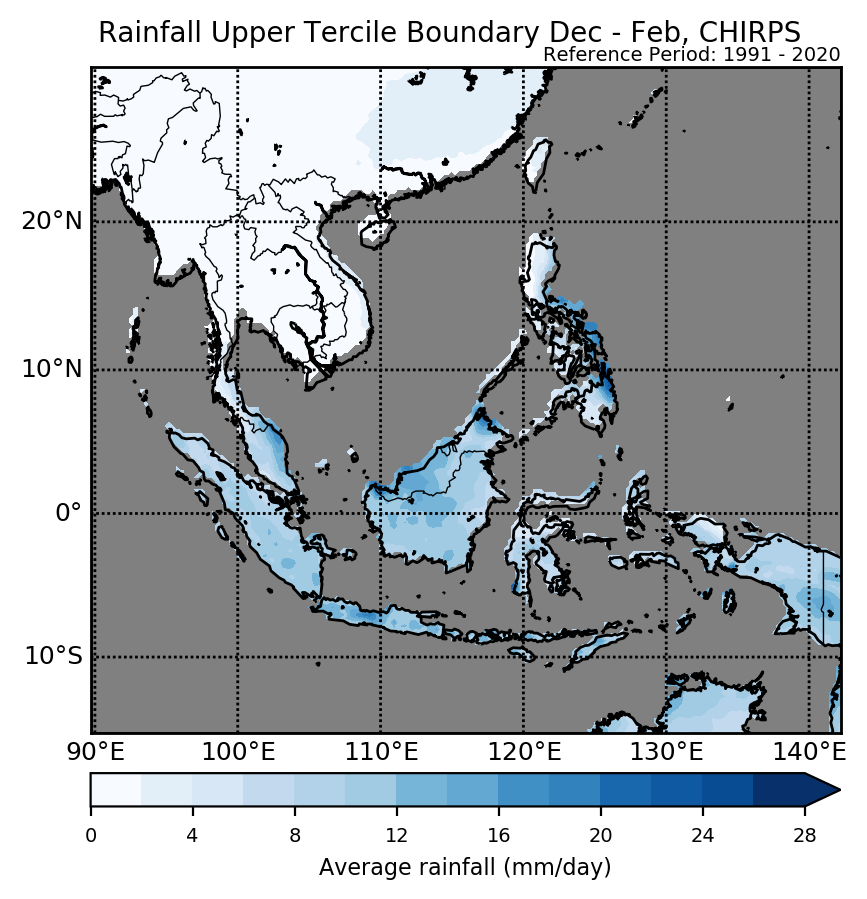Rainfall
Seasonal Rainfall Outlook: December 2021 - February 2022 (DJF)
Issued: 30 Nov 2021
For DJF 2021-2022, there is an increased chance of near- to above-normal rainfall over much of the Maritime Continent, and a mix of below- to above-normal rainfall over Mainland Southeast Asia.
For DJF 2021-2022, based on the multi-model ensemble (Figure 4), there is an increased chance of near- to above-normal rainfall for much of the Maritime Continent, except for some parts of the equatorial region where below- to near-normal rainfall or no dominant tercile is predicted. The highest likelihood of above-normal rainfall is over northeast parts of the Maritime Continent. NCEP model (Figure 1) is most confident of below-normal rainfall over Borneo, while UK Met Office and ECMWF models (Figures 2 and 3) predict a smaller increase in chance of below-normal rainfall. The models’ skill is moderate to relatively high for northeastern parts of the Maritime Continent and low to moderate elsewhere.
For Mainland Southeast Asia, based on the multi-model ensemble (Figure 4), there is an increase in chance of above-normal rainfall for the southeastern region, and below-normal rainfall for parts of northern Mainland Southeast Asia. Among the models, NCEP model is most confident for below-normal rainfall, while UKMO and ECMWF models predict a smaller increase in chance of below-normal rainfall. However, model skill is low for this season for Mainland Southeast Asia.

Figure 1: Rainfall tercile summary predictions of NCEP model for DJF 2021-2022.

Figure 2: Rainfall tercile summary predictions of ECMWF model for DJF 2021-2022 (contains modified Copernicus C3S information).

Figure 5: Average climatological rainfall's lower tercile boundary for DJF based on CHIRPS (Reference period: 1991-2020).

Figure 6: Average climatological rainfall's upper tercile boundary for DJF based on CHIRPS (Reference period: 1991-2020).
The qualitative outlook is assessed for the region in general. For specific updates on the national scale, the relevant ASEAN National Meteorological and Hydrological Services should be consulted.